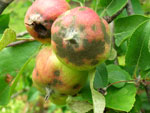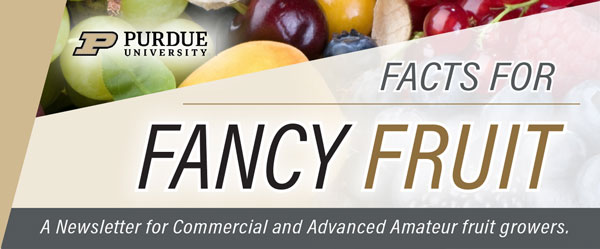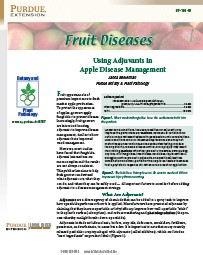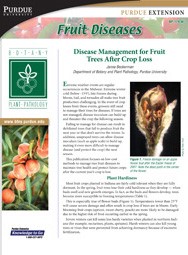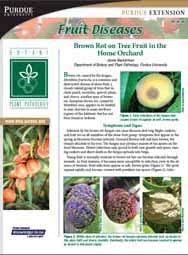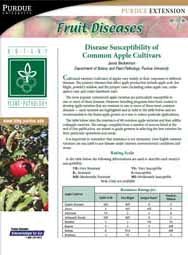Fruit Pathology - Botany and Plant Pathology, Purdue University
Fruit Pathology Specialist

Dr. Janna Beckerman
Program Description
The goal of our research is to develop environmentally sound disease management strategies that are economically feasible for Indiana growers producing apples. To do so, we are developing two web-based programs: 1) a program to assist growers in developing effective fungicide rotations and 2) a forecasting tool for the major diseases that infect apples. Our research effort is directly tied to our extension work, and focuses on the identification and management of fungicide resistance. To that end, we are currently surveying Indiana orchards to evaluate the incidence of fungicide resistance in Venturia inaequalis, the fungus that causes apple scab, and Glomerella cingulata, the causal agent of bitter rot. An effective fungicide rotation, coupled with good forecasting tools reduces chemical inputs, and minimizes the likelihood of fungicide resistance developing.
|
Apple scab is one of the most serious diseases of apple and ornamental flowering crabapple, and affects both leaves and fruit. In commercial apple production, foliar infection by the apple scab pathogen results in defoliation that leads to a loss of apple quality, and impacts winter-hardiness. Fruit infections result in blemished and deformed fruit that cannot be sold. In commercial apple production, this disease is primarily managed through the use of fungicides. However, fungicide resistance is an emerging problem. We are currently surveying the Venturia inaequalis population for the presence of fungicide resistance. |
|
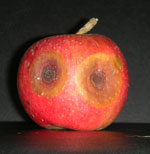 Bitter Rot Bitter Rot |
Recent restrictions in fungicide registrations have resulted in the development of management issues for diseases that were previously minor problems. Bitter rot is a common orchard disease, but has been increasing in incidence and severity across the Midwest due to changes in pesticide labeling. We are currently collecting isolates from Indiana orchards to determine if fungicide resistance, or changes in fungicide use has resulted in the increase of this problem.
|
Current research involves the examination of surfactants combined with captan and mancozeb to reduce the rate and extend the interval between fungicide applications to control apple scab and other apple diseases, how to improve the management of overwintering inoculum, and fungicide trials to inform the recommendations in the Midwest Fruit Pest Management Guide.

